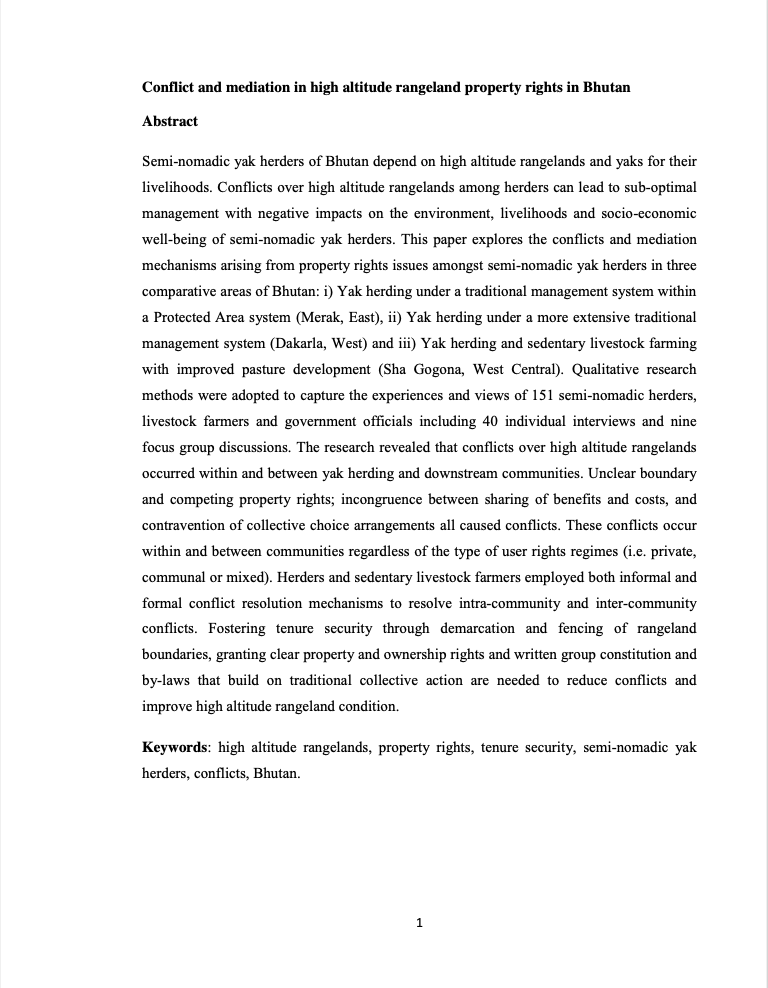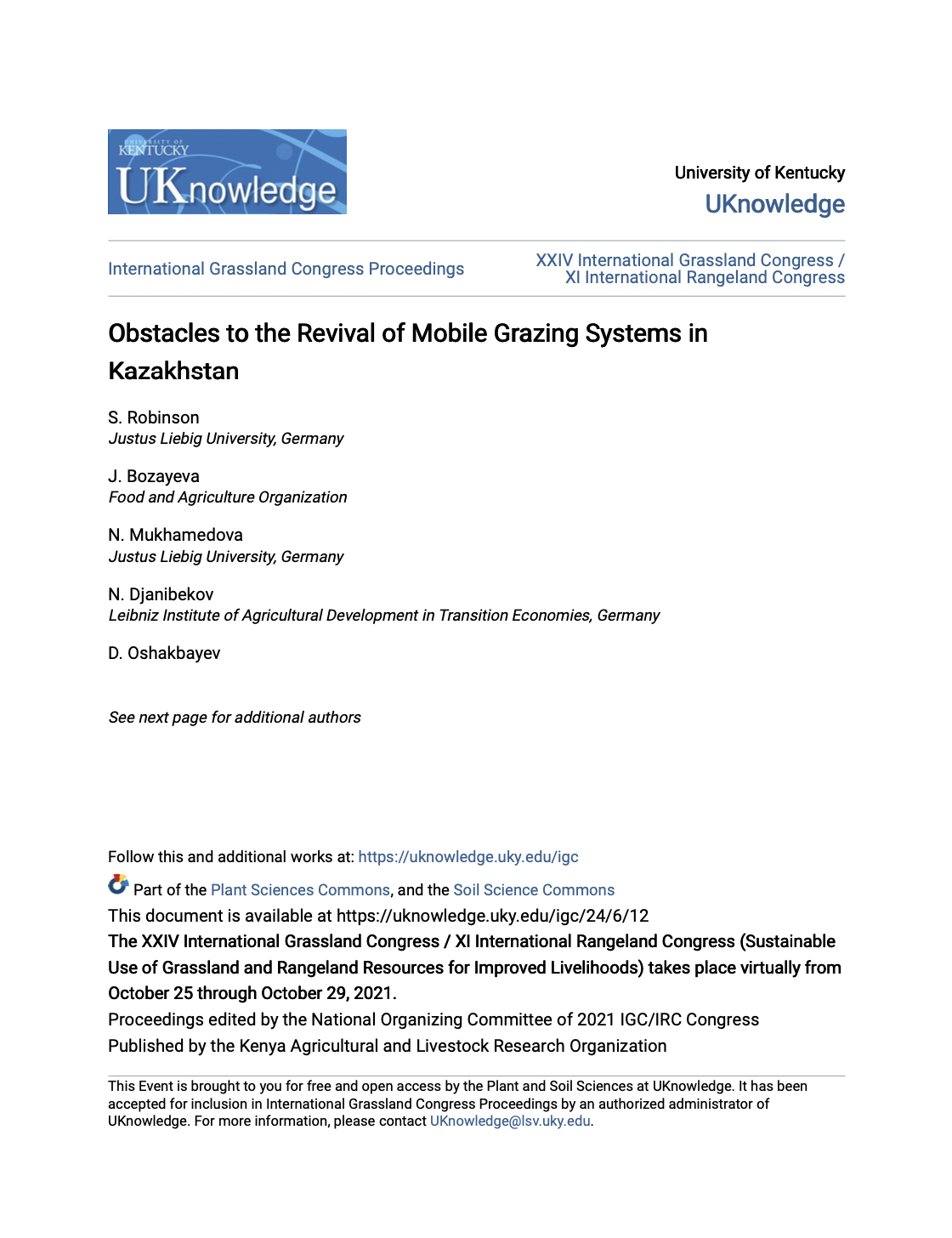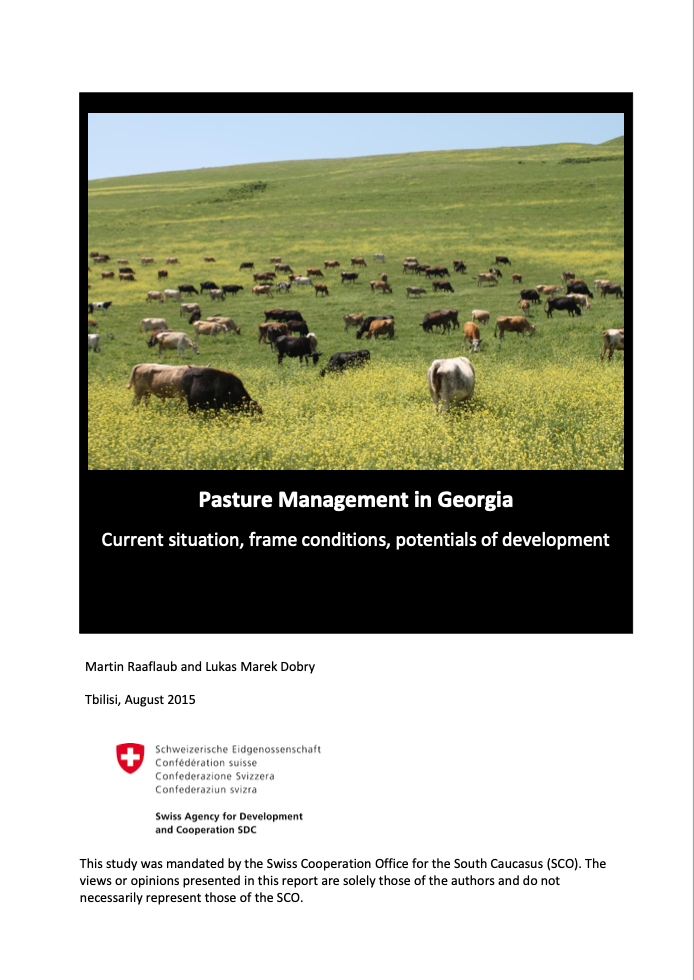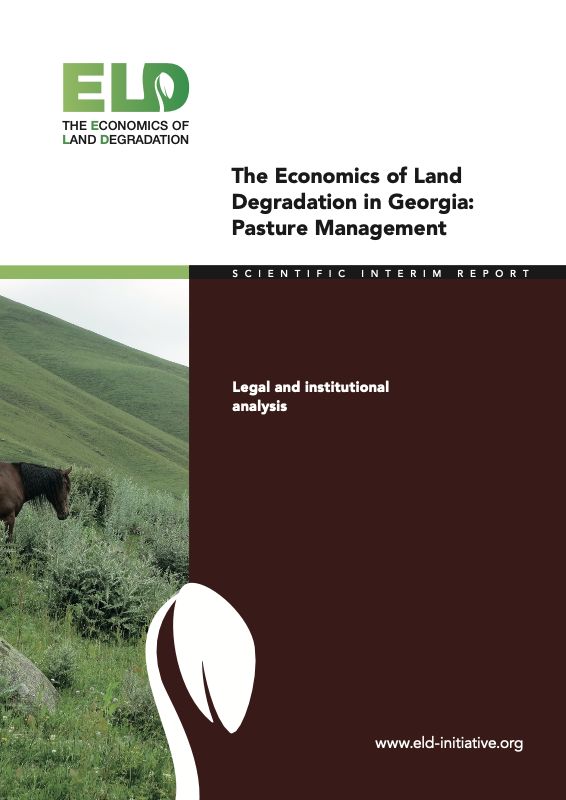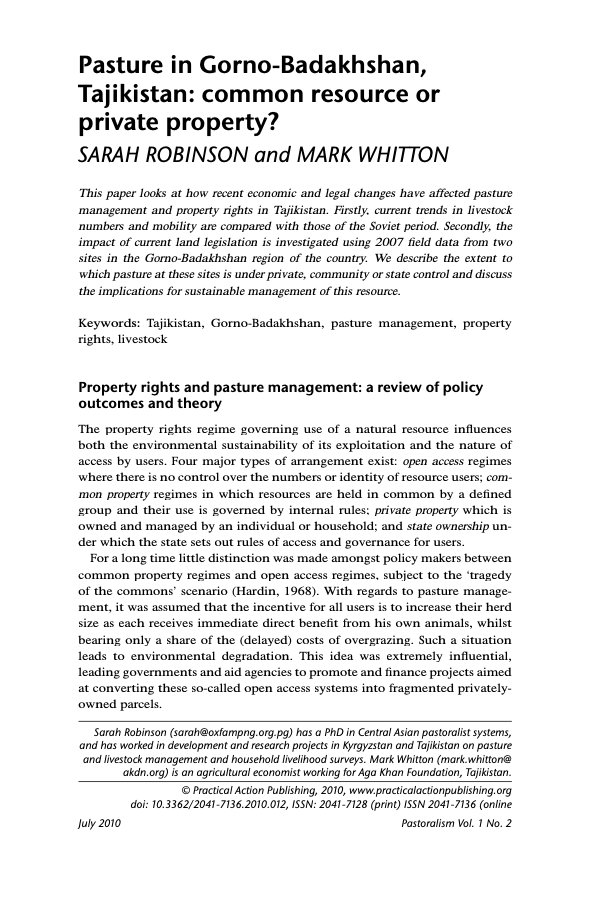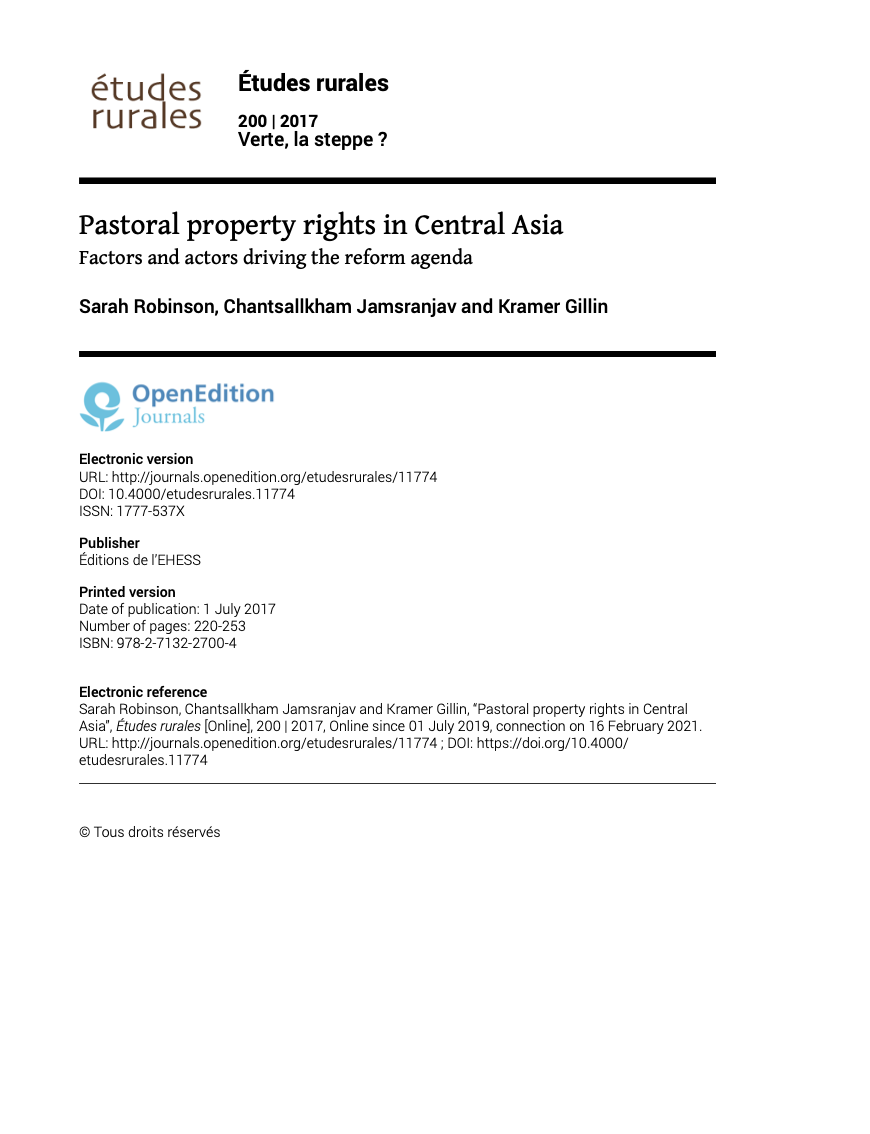Implication of Legislative Reform under The Land Act of Bhutan, 2007: A case study on Nationalization of Tsamdro & Sokshing and its associated socioeconomic and environmental consequences
Given its seemingly beneficial aspects to socioeconomic development and environmental well-being, the legislative reforms initiated under the Land Act of Bhutan, 2007 have raised so much consternation as well as hope in the minds of the Bhutanese people who either depend on livestock husbandry or leasing out such rights to others with livestock and compensated with payment in cash or kind in the form of livestock products.



